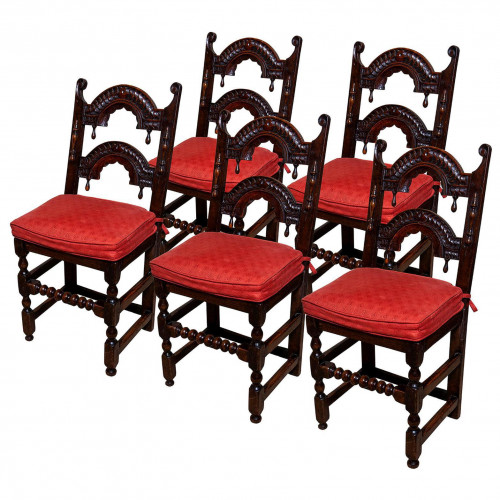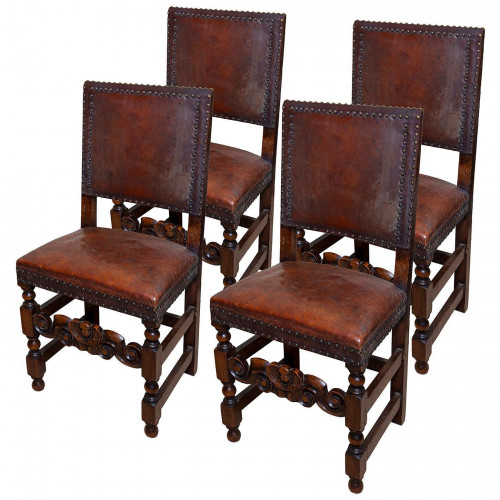An important, set of four, late -17th century, walnut sidechairs
10456
The shaped crestings, one partially replaced, with gadrooning above a shell motif within scrollwork and acanthus leaf carving. The turned uprights with composite columns at the top, and carved blocks at the bottom. The caned splats faced with scrollwork. The loose covers upholstered in an early 20th century, voided silk and cotton copied in a 17th century style, and lined in a Holland linen.. A top stuffing and under calico added to the original upholstery (see photographs ).
Standing on tapered legs with mushroom cappings and ball turnings and joined by shaped 'x' stretchers with a central finial. Minor repairs to losses. Excellent original colour and patina. Probably English, fourth quarter of the 17th century.
The form and ornament of these sidechairs are heavily influenced by the designs of Daniel Marot, and they were probably made by immigrant craftsmen working in England during the fourth quarter of the 17th century. They form part of what was originally a larger set, indicated by the webbing underneath one chair retaining an ink mark '12', and the incised roman numerals on the back of each chair. They were originally covered with loose covers, and some of the original pins which would have held the loose covers in place survive on the underside of the siderails. Sadly few chairs of this quality survive today, particularly in such fine condition.. The combination of the height, fluid scrollwork, fine columns, rich upholstery, mushroom cappings and 'x' stretchers gives them great presence. They are not merely impressive to view, the use of canning in the splat and upholstered seats, ensures that they are comfortable to sit in.. The colour and patina have matured to an exceptional quality over time. They are interesting from a transitional point of view in that the cresting is a substructure resting on the uprights which are baluster turned. The straight back leg gives a solid support to the structure , which together with the backs which are caned for comfort, indicates that they were probably made for use as dining chairs.
17th Century
1675
Walnut
England











